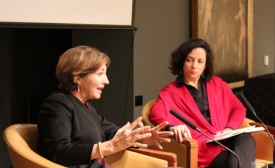web 2.0

The rise of Web 2.0 tools created a new, easy-to-use channel for diplomats and public diplomacy bureaus to reach far-flung publics. Many foreign ministries adopted the new technology almost immediately, creating a field called public diplomacy 2.0. New problems appeared quickly though. Social media’s all-in participation creates an environment where messages cannot be controlled as they are framed and re-framed by the twittering masses.
The important factor about U.S. engagement via web 2.0 is not that that the government is using it, but rather that it doesn’t address the core problems of engagement overseas: fortress embassies, a lack of understanding, and failures to follow through on commitments.
The internet is transforming public diplomacy around the world and has spurred popular involvement in key global issues such as accountable governance, climate change and terrorism, say experts and diplomats.
The Public Diplomacy Division of the Ministry of External Affairs has actively embraced Web 2.0 tools so that it can engage with the widest cross-section of people in India and the around the world. We have also found social media a powerful medium to expand our outreach amongst younger audiences
That was the genesis of the MEA’s move beyond its high walls into the social media platforms and to become more accessible through the tools of the 21st century—Twitter, Facebook, YouTube and their ilk.
At the heart of public diplomacy is a commitment on the part of nation-states to open up, reach out and engage people globally. People are the ultimate beneficiaries of all public diplomacy efforts being made by a few key countries.
On May 03, 2011 the world’s first Jewish social platform, JewishNet, was launched. According to the project creators, its uniqueness is in providing users with a platform to develop their own ideas and fulfil their potential even beyond the virtual world. The platform covers three basic areas: socialization, education and public diplomacy.







